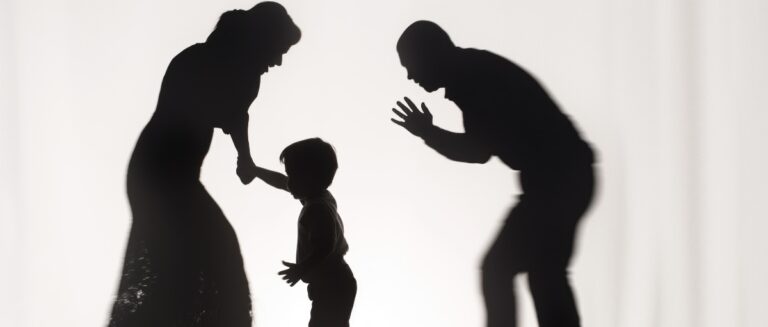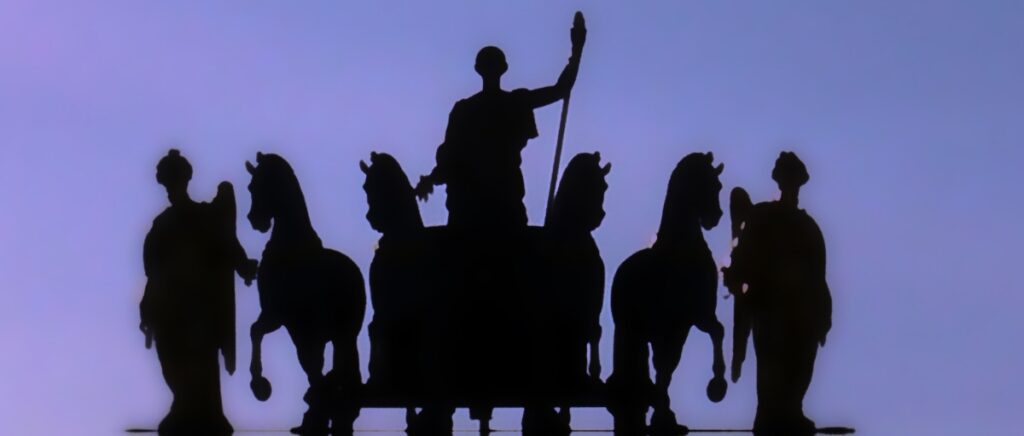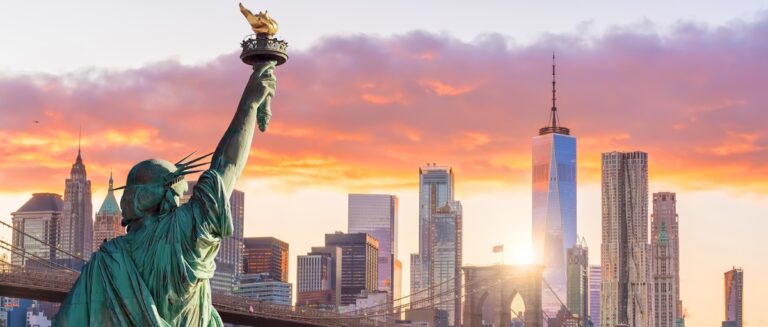1959 is often overlooked in the annals of history, overshadowed by the tumultuous decade that followed. But for those who lived through it, 1959 was a year like no other—a year that set the stage for the cultural, political, and technological upheavals that would define the 1960s and beyond.
In just 12 short months, the world witnessed a staggering array of pivotal events and groundbreaking developments. From the launch of the first weather satellite to the premiere of “The Twilight Zone,” 1959 was a year of seismic shifts and historic firsts.
For the boomer generation, who came of age during this transformative period, 1959 events were more than just headlines—they were the backdrop of their lives, shaping their experiences and worldviews in profound and lasting ways.
Take a journey back in time and discover why 1959, indeed, was the year that changed everything.
Political Upheavals
The year 1959 was marked by significant political upheavals that reshaped the global landscape and set the stage for the decades to come. From the rise of Fidel Castro in Cuba to the Dalai Lama’s flight from Tibet, these events had far-reaching consequences that reverberated worldwide.
The Cuban Revolution
On January 1, 1959, Revolutionary leader Fidel Castro’s forces entered Havana. Before dawn, President Batista, his family, and 180 of his associates fled the country. Castro’s rise to power signaled a new era in Cuban history and a significant shift in U.S.-Cuba relations.
Key points:
- Castro nationalized American-owned businesses and property, leading to increased tensions with the United States.
- The U.S. imposed an economic embargo on Cuba in 1960, which remains in place to this day.
- The events in Cuba set the stage for the Bay of Pigs invasion in 1961 and the Cuban Missile Crisis in 1962.
The Dalai Lama’s Flight from Tibet
In March 1959, the Dalai Lama, the spiritual leader of Tibet, fled to India following a failed uprising against Chinese rule. His escape began a decades-long struggle for Tibetan independence and human rights.
Key points:
- The Chinese government had occupied Tibet since 1950, claiming it as part of China.
- The Dalai Lama’s flight brought international attention to the Tibetan people’s plight and fight for self-determination.
- Today, the Dalai Lama remains a global advocate for Tibetan rights and a symbol of peaceful resistance.
Other Notable Political Events
1959 saw a number of other significant political developments that helped shape the course of history:
- The Antarctic Treaty was signed by 12 nations on December 1st, 1959, setting aside the continent for peaceful scientific research and banning military activity.
- The United Nations admitted several newly independent nations as members, reflecting the growing tide of decolonization in Africa and Asia.
- The United States and Canada signed an agreement to build the St. Lawrence Seaway. The agreement provides stability for marine supply chains and continued maintenance of a safe, secure, and efficient transportation channel.
These events, along with the Cuban Revolution and the Dalai Lama’s flight, underscored the changing nature of global politics in 1959 and set the stage for the tumultuous decade.
Technological Advancements
1959 witnessed groundbreaking technological advancements that would shape the modern world as we know it. From the invention of the microchip to the dawn of the space age, these developments laid the foundation for the digital revolution and the exploration of the final frontier.
The Microchip
In 1959, electrical engineer Jack S. Kilby invented the monolithic integrated circuit (microchip), which is still widely used in electronic systems. This tiny device, no larger than a fingernail, would revolutionize the electronics industry and pave the way for the digital age.
Key Points:
- The microchip allowed for the miniaturization of electronic devices, making them smaller, faster, and more efficient.
- Microchips are the size of a fingernail. Today, they are found in everything from computers and smartphones to cars and household appliances.
- Kilby’s invention earned him the Nobel Prize in Physics in 2000 and cemented his place in the annals of technological history.
Space Exploration
1959 marked a major milestone in space exploration history, with the Soviet Union and the United States making significant strides in their quest to conquer the final frontier.
Key points:
- In January, the Soviet Union launched Luna 1, the first spacecraft to reach the vicinity of the Moon.
- In September, the Soviet Union’s Luna 2 became the first man-made object to reach the surface of the Moon.
- The United States launched Pioneer 4 in March, the first American spacecraft to escape Earth’s gravity.
- In August, the United States launched Explorer 6, which transmitted the first image of Earth from a satellite.
These early space missions set the stage for the space race of the 1960s, culminating in the historic Apollo 11 Moon landing in 1969.
Other Notable Inventions and Developments
1959 saw some other significant technological advancements that would go on to shape the modern world:
- The Boeing 707, the first successful commercial jet airliner, entered service, ushering in the era of mass air travel.
- Vanguard 2 was the first weather satellite launched by the United States, which provided valuable data on cloud cover and weather patterns.
- The Xerox 914, the first commercially successful automatic plain-paper copier, was introduced, revolutionizing how businesses and individuals duplicate documents.
These inventions and developments, along with the microchip and the early space missions, underscored the rapid pace of technological change in 1959 and hinted at the transformative decades to come.
Cultural Milestones
The year 1959 was a watershed moment in popular culture, with groundbreaking developments in film, television, music, literature, and art. From the epic grandeur of “Ben-Hur” to the eerie allure of “The Twilight Zone,” these cultural milestones left an indelible mark on the baby boomer generation and beyond.
Film and Television
1959 saw the release of some of the most iconic films and television shows of all time, pushing the boundaries of storytelling and captivating audiences around the world.
- “Ben-Hur:” the epic historical drama directed by William Wyler and starring Charlton Heston, premiered in November and won a record 11 Academy Awards.
- “Some Like It Hot:” the classic comedy directed by Billy Wilder and starring Marilyn Monroe, Tony Curtis, and Jack Lemmon, was released in March and is now regarded as one of the greatest films ever made.
- “The Twilight Zone:” the groundbreaking anthology series created by Rod Serling, premiered on CBS in October and ran for five seasons, leaving an indelible mark on science fiction and popular culture.
These films and television shows, along with other notable releases like “North by Northwest” and “Bonanza,” showcased the power of storytelling to entertain, inspire, and challenge audiences in new and exciting ways.
The Day the Music Died
The year 1959 is often remembered as the “Day the Music Died,” a reference to the tragic plane crash that claimed the lives of rock and roll pioneers Buddy Holly, Ritchie Valens, and J.P. “The Big Bopper” Richardson on February 3.
Key points
- The three musicians were on tour together, playing a series of shows across the Midwest.
- The plane crash, which occurred near Clear Lake, Iowa, sent shockwaves through the music industry and the wider culture, immortalized in Don McLean’s 1971 song “American Pie.”
- Despite the tragedy, 1959 saw the release of many groundbreaking albums and songs, including Miles Davis’ “Kind of Blue,” Chuck Berry’s “Johnny B. Goode,” and Ray Charles’ “What’d I Say.”
The music of 1959, marked by both tragedy and triumph, reflected the changing tastes and attitudes of a generation on the cusp of a new era.
Literature and Art
The year 1959 witnessed the emergence of new voices and visions in literature and art, pushing the boundaries of what was possible and acceptable in the cultural landscape.
- The Guggenheim Museum, designed by Frank Lloyd Wright, opened in New York City in October, showcasing a groundbreaking collection of modern and contemporary art.
- Saul Bellow’s novel Henderson the Rain King was published in January, cementing his reputation as one of the greatest American writers of his generation.
- The poem “Howl” by Allen Ginsberg, first published in 1956, was at the center of an obscenity trial in San Francisco, which ended in 1959 with a landmark ruling in favor of free speech.
These cultural milestones, along with other notable works like “The Naked Lunch” by William S. Burroughs and “The Tin Drum” by Günter Grass, reflected the changing attitudes and values of a society on the brink of a cultural revolution.
Social and Historical Context
The events and developments of 1959 did not occur in a vacuum; they were shaped by the broader social and historical forces of the time. From the ongoing struggle for civil rights to the simmering tensions of the Cold War, the year was a microcosm of the complex and often tumultuous world of the mid-20th century.
The Civil Rights Movement
1959 was a pivotal moment in the history of the Civil Rights Movement, as the nation began to awaken to the reality of racial injustice and the urgent need for change.
- In September, the U.S. Civil Rights Commission issued a report on the state of race relations in the country, documenting the pervasive discrimination and segregation faced by African Americans.
- The report, which was widely publicized, helped to galvanize public opinion and build support for the civil rights legislation of the 1960s.
- The year also saw the continuation of the Montgomery Bus Boycott, which had begun in 1955 and would eventually lead to the desegregation of public transportation in Alabama.
These events, along with other notable moments like the desegregation of schools in Little Rock, Arkansas, reflected the growing momentum of the Civil Rights Movement and the determination of a new generation to challenge the status quo.
Cold War Tensions: A World Divided
The year 1959 was marked by the ongoing tensions of the Cold War, as the United States and the Soviet Union jockeyed for power and influence on the global stage.
- In July, Soviet leader Nikita Khrushchev and U.S. Vice President Richard Nixon engaged in the famous “Kitchen Debate” at the American National Exhibition in Moscow, trading barbs over the merits of capitalism and communism.
- The year also saw the continuation of the space race, with both the United States and the Soviet Union launching major missions to explore the final frontier.
- The Cold War tensions of 1959 would continue to shape global politics for decades to come, culminating in the Cuban Missile Crisis of 1962 and the fall of the Berlin Wall in 1989.
The events of 1959, from the Kitchen Debate to the space race, reflected the complex and often contradictory nature of the Cold War era, as the world’s two superpowers vied for supremacy and the allegiance of nations around the globe.
The Baby Boomer Generation Comes of Age
The year 1959 was a significant moment in the history of the baby boomer generation, as the first wave of boomers began to come of age and assert their influence on American culture and society.
Facts about baby boomers:
- The baby boomers, born in the years following World War II, represented a massive demographic shift in the United States, with over 76 million individuals born between 1946 and 1964.
- In 1959, the oldest boomers were just entering their teenage years, but already they were beginning to shape the cultural landscape through their music, fashion, and attitudes.
- The boomers would play a pivotal role in the social and political upheavals of the 1960s and beyond, from the counterculture movement to the Vietnam War protests to the fight for women’s rights.
The baby boomers of 1959, with their unprecedented numbers and unique generational identity, represented a new force in American society that would go on to shape history in profound and lasting ways.
1959: The Year That Set the Stage
As we have seen, 1959 was a time of remarkable change and transformation, a year that witnessed pivotal events and developments across the realms of politics, technology, culture, and society. From the Cuban Revolution to the invention of the microchip, from the premiere of “Ben-Hur” to the tragic “Day the Music Died,” the events of 1959 had a profound and lasting impact on the world we live in today.
For Generation X, who came of age during this remarkable time, 1959 holds a special significance. It was a year that shaped their childhood memories and collective identity, setting the stage for the tumultuous and transformative decades to come.
Looking back from the vantage point of the 21st century, it is clear that 1959 was a watershed moment in human history, a year that marked the end of one era and the beginning of another. The political upheavals, technological advancements, cultural milestones, and social movements of 1959 laid the foundation for the modern world as we know it, and their legacy continues to resonate today.
Sources
PBS. (2023). Post-revolution Cuba. PBS. https://www.pbs.org/wgbh/americanexperience/features/post-revolution-cuba/
PBS. (2023). Comandante: Cold War. PBS. https://www.pbs.org/wgbh/americanexperience/features/comandante-cold-war/
John F. Kennedy Presidential Library and Museum. (2023). The Bay of Pigs. JFK Library. https://www.jfklibrary.org/learn/about-jfk/jfk-in-history/the-bay-of-pigs
Wikipedia. (2023). Annexation of Tibet by the People’s Republic of China. Wikipedia. https://en.wikipedia.org/wiki/Annexation_of_Tibet_by_the_People%27s_Republic_of_China
Britannica. (2023). The 14th Dalai Lama. Britannica. https://www.britannica.com/biography/Dalai-Lama-14th
International Campaign for Tibet. (2023). His Holiness the Dalai Lama. Save Tibet. https://savetibet.org/why-tibet/his-holiness-the-dalai-lama/
United Nations. (2023). History of the UN: 1951-1960. UN. https://www.un.org/en/about-us/history-of-the-un/1951-1960
Government of Canada. (2024). Modernized agreement with the St. Lawrence Seaway Management Corporation. Transport Canada. https://www.canada.ca/en/transport-canada/news/2024/03/modernized-agreement-with-the-st-lawrence-seaway-management-corporation.html
National Inventors Hall of Fame. (2023). Jack S. Kilby. Invent. https://www.invent.org/inductees/jack-s-kilby
Mirai Intex. (2023). The basics of microchips. Mirai Intex. https://mirai-intex.com/blog/the-basics-of-microchips
ASML. (2023). Microchip basics. ASML. https://www.asml.com/en/technology/all-about-microchips/microchip-basics
Wikipedia. (2023). The Day the Music Died. Wikipedia. https://en.wikipedia.org/wiki/The_Day_the_Music_Died
Frank Lloyd Wright Foundation. (2023). Solomon R. Guggenheim Museum. Frank Lloyd Wright Foundation. https://franklloydwright.org/site/solomon-r-guggenheim-museum/
Britannica. (2023). The howl heard round the world. Britannica. https://www.britannica.com/story/the-howl-heard-round-the-world
University of Notre Dame. (2023). Hesburgh Portal. Hesburgh Portal. https://hesburghportal.nd.edu/story-report.html
Britannica. (2023). Montgomery bus boycott. Britannica. https://www.britannica.com/event/Montgomery-bus-boycott
Bill of Rights Institute. (2023). The Nixon-Khrushchev kitchen debate. Bill of Rights Institute. https://billofrightsinstitute.org/essays/the-nixonkhrushchev-kitchen-debate
Space.com. (2023). The space race. Space.com. https://www.space.com/space-race.html
John F. Kennedy Presidential Library and Museum. (2023). The Cold War. JFK Library. https://www.jfklibrary.org/learn/about-jfk/jfk-in-history/the-cold-war
Investopedia. (2023). Baby boomers. Investopedia. https://www.investopedia.com/terms/b/baby_boomer.asp
McCullough, K. (2023). Understanding baby boomers’ contribution. Karen McCullough. https://www.karenmccullough.com/understanding-boomers-contribution/











